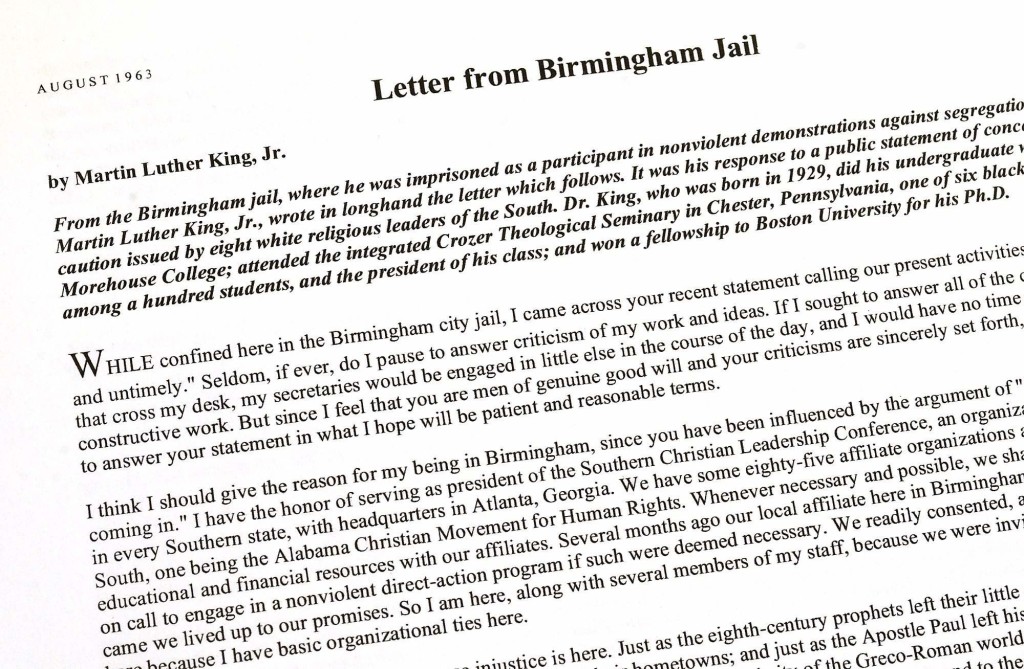

Furthermore, “Letter From a Birmingham Jail” is an invaluable part of any lesson on rhetoric, social injustice, the political history of the 1960’s, and the philosophy of law.Ĭite strong and thorough textual evidence to support analysis of what the text says explicitly as well as inferences drawn from the text, including determining where the text leaves matters uncertain.ĭemonstrate knowledge of eighteenth-, nineteenth- and early-twentieth-century foundational works of American literature, including how two or more texts from the same period treat similar themes or topics.Īnalyze how an author's choices concerning how to structure specific parts of a text (e.g., the choice of where to begin or end a story, the choice to provide a comedic or tragic resolution) contribute to its overall structure and meaning as well as its aesthetic impact. This piece also works exceptionally well as part of a larger lesson that aims to contrast King’s pacifistic beliefs with the more militant side of the Civil Right’s Movement, best represented by Malcolm X, The Nation of Islam, and the notorious Black Panther Party. King’s “Letter From a Birmingham Jail” is a piece that compliments any introductory lesson on Civil Rights, with a particular focus on the life and works of Martin Luther King, Jr.


In the process, King not only justifies non-violent protest as a mechanism of change, but holds it up as a liberating force that transmutes hatred into love.
LETTER FROM BIRMINGHAM JAIL ANNOTATIONS SERIES
In contrast to the “superficial social analysis” made by the clergymen, King makes a series of stark and penetrating social critiques that expose the racist power structure-and deeply entrenched systemic racism-that dominates both the Southern and Northern United States. In response, King wrote a brief treatise that is the distillation of his philosophical and ideological beliefs. In the article, the clergymen condemned King’s style of leadership and his tactful, albeit effective method of protest-non-violent resistance. The impetus behind this masterful work was a newspaper article written by eight white Alabama clergymen. In his “Letter from a Birmingham Jail,” King artfully explains the motivations behind his campaign of non-violent protest.


 0 kommentar(er)
0 kommentar(er)
